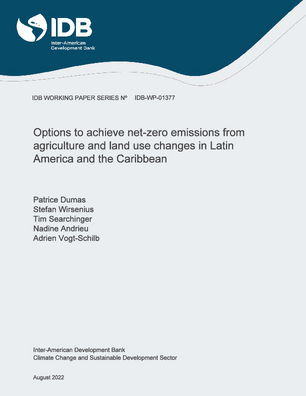Options to achieve net-zero emissions from agriculture and land use changes in Latin America and the Caribbean
Date
Sep 2022
Eleven countries in Latin America and the Caribbean have committed to achieving net-zero emissions by 2050. Changes in the food system are critical to achieving these carbon neutrality goals, as agriculture and the resulting land use changes are responsible for almost half of the greenhouse gas emissions in the region. We quantified the effects of options on the supply side (eg, yield improvements, silvopastoralism, agroforestry) and on the demand side (eg, waste and loss reduction, dietary change) seeking to reduce emissions and transform the land use system into a net carbon sink by 2050 while improving the nutrition of a growing population. We considered both direct emissions from agriculture and the pressure that food production exerts on changes in land use, and separately tracked emissions from the region and those linked to trade. Our results confirm that livestock play a major role, emitting around 60% of greenhouse gas emissions from agriculture and land use changes. Achieving a net-negative emissions food system, capable of balancing emissions from the rest of the economy, will require ambitious and ongoing improvements in yields and changes in diets to moderate the growing demand for beef, continuously decrease the proportion of dedicated land to agriculture and instead increase those dedicated to carbon sequestration and the preservation of biodiversity.




